Here's where the beef is! The menu Wallet has all the goodies you're looking for and installed EWA in the first place. Lots of options have been packed into Wallet. Not all of them (Assets, i.e.) relate well to the term "Wallet". That's because EWA started out with just dealing with wallet transactions and wallet journals. As you might or might have not recognized, I'm really trying to make keyboard navigation in EWA as easy as possible, adding keyboard shortcuts wherever possible. So, when EWA started, a lot of characters became "occupied" by those shortcuts. Cramping in new menu main entries with a meaningful name, became quite complicated. That's when I decided to just stick with File, Wallet and Extras.

Wallet transactions will most likely be the option you're using the most as a trader. It shows all wallet transactions matching the filters you set.

Remember, when you configured EWA and set the number of days to display data by default? If you first load this screen, that's when this setting is applied:
 Default days back from configuration applied.
Default days back from configuration applied.
Today is 2009-01-12 (EVE notation). You set the option "Default days back" to 1. EWA tries to load all wallet transactions for today and yesterday. If there happen to be no wallet transactions within that date range, EWA goes back in time until it finds at least one wallet transaction. It will load this transaction and adjust the "Date from" field accordingly. While normally I personally hate applications which try to be smarter than their user, this time I decided this would be a good move. You once sold that valuable pirate implant, something like a year ago, somwhere in the Essence region. Without EWA adjusting the date for you, in cases like this, you would have to set a date from, query, find nothing, set date from again, query, find nothing ... rinse, repeat. EWA helps you out here in finding the last date when a transaction matching your current filter settings occured.
Pay also attention to the right panel in the status bar of the main screen. As mentioned before, sometimes you'll find helpfull information there.
 Number of wallet transactions found matching your current filter settings.
Number of wallet transactions found matching your current filter settings.
If no transactions match your current filter settings, it will read "Transactions: 0". Similar information is provided for all other windows. So, if a query doesn't turn up the results you expected, have a look there and see if EWA was able to find at least one matching entry.
Although most filters should be self-explanatory, let's walk through the filters and see what they're for. All filters can be combined. All available filter entries are retrieved from your transactions. If you never traded a certain item or with a certain customer or in a certain region, there will be no such entry in this filter's list.
If you trade a lot in (player owned) 0.0 space and think EWA misses some transactions, try refreshing the outpost list. The chances that you traded in a new outpost are quite high. This needs to be done with menu Extras -> Update game data -> Outposts / Conquerable stations. As outposts can be build at any time, they're not part of CCP's static database dump and need to be fetched from the API. Sadly, there isn't some kind of notification API, therefore you need to do this for yourself from time to time. Refreshing this list should solve the issue of missing transactions.
After you have set up the filters the way you like, click the "Apply filter" button to retrieve the transactions matching these filter settings. Remember - if nothing changes, check the status bar to see if at least one matching transaction was found.
The "Reset filter" button resets all filters back to <All>. This saves you from setting each filter back on its own, once you want to go back and view all transactions again.
The checkbox "Merge cells" lets you group similar entries in the grid. It only impacts the visual presentation of the available data and has no effect on the filter settings.


The checkbox "Disable subtotals" removes all total/subtotal rows from the grid. This gives you a plain, Excel-like row-per-row view of the data. And this is indeed what this option is intended for: exporting "clean data". With totals enabled, an Excel export also export the total rows ... but as fixed data, not calculated cells. If you want to do your own reporting in Excel those rows might be a hinderance. Here's how it looks like:
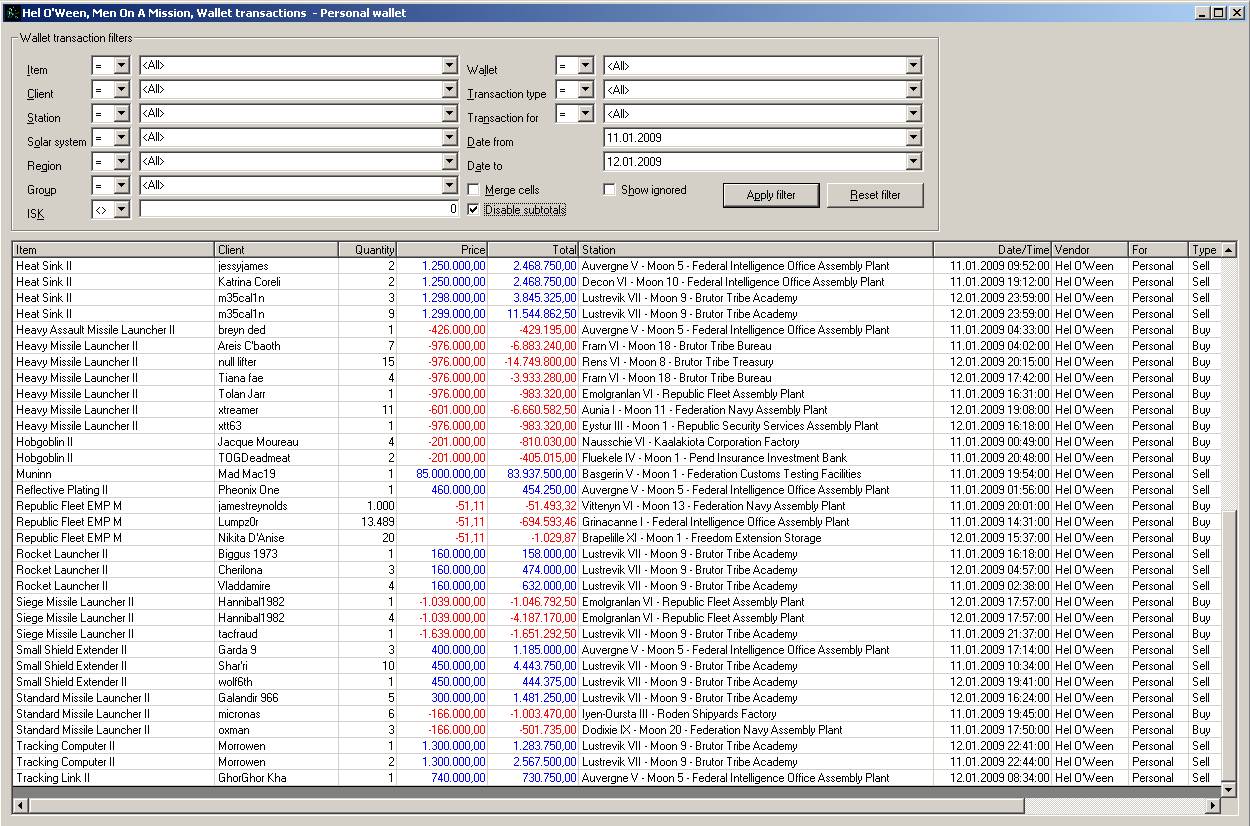
Right-clicking on the grid will pop up a context menu.

Wallet transactions context menu. |
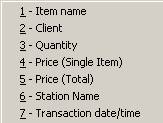
Sort options. |
With the exception of Expand all/Collapse all, these menu entries only do work, if you right click on a row which contains an item, not a summary row ("Total ...").
Please note that deleting records from the database only makes sense if the API has already scrolled "past" these records. Otherwise the deletion is only of temporary nature, as the same records come with the next API download again. Although EWA keeps track and takes care of duplicate records, it does so not for deleted records. Instead, consider using the ignore option.
The wallet transactions statistics window will display Top <x> type statistics for your transactions.
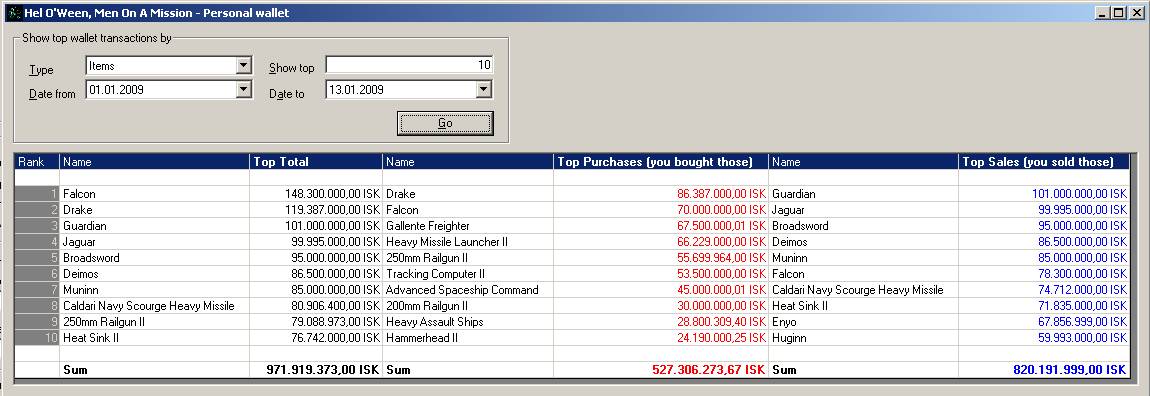
Available statistics are:
Item details provides you lots of (financial) details (sic!) about a specific item.
You can open this window from the menu Wallet and select from the dropdown box the item you're interested in. A more conveniant way to open this screen though, is from the grid's context menu (right-click the grid) of the Wallet transaction, Wallet journal, Market order or Assets screen. That way, the item you right-clicked on, is preselected in the Item details window.
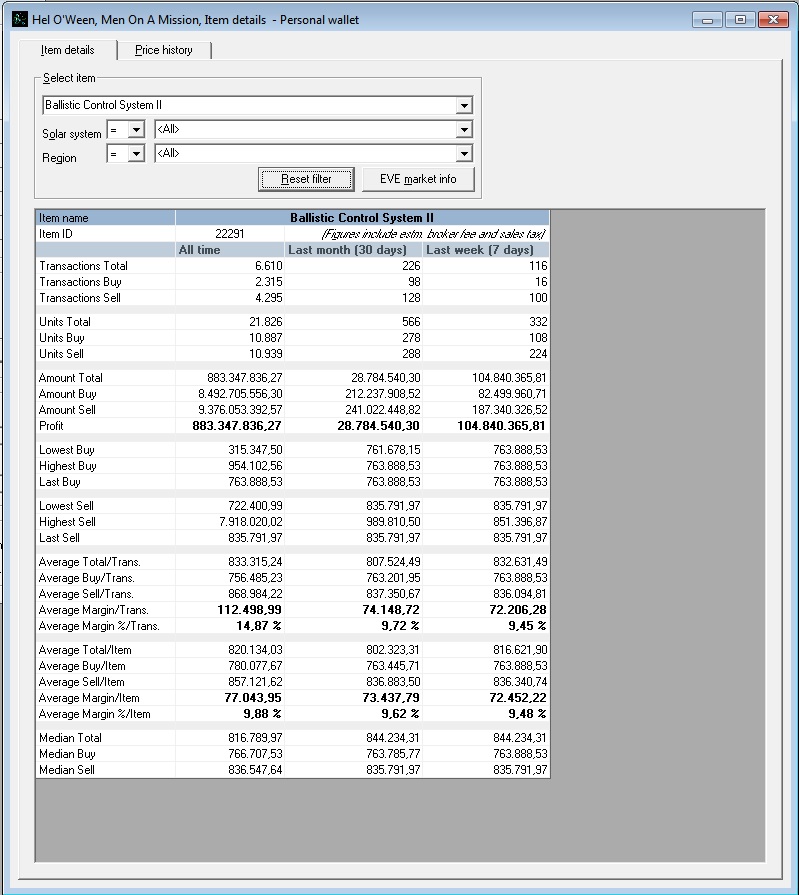
Again, most of the stuff in there should be self-explanatory. Perhaps the difference between "per transaction" and "per item" needs an explanation. Transaction means exactly that: a transaction (one entry in your wallet transactions) for the specific item. The key here is that a transaction could include one item or 1,000 items (of the same type). It should be clear that therefore the average buy/sell per transaction most likely will differ from the average buy/sell per item.
The second tab, "Price history", gives you a run-down of the your historical buy and sell prices for this item.
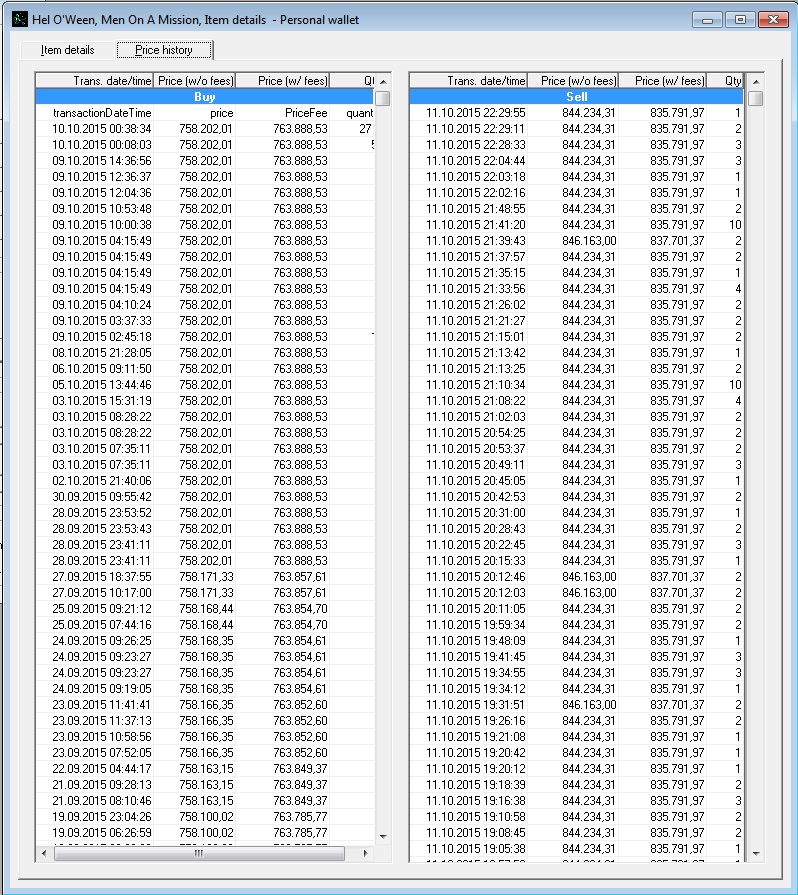
The button "EVE market info" will open up another window, which lets you query current market data (buy and sell offers) from EVE Central and EVE Metrics. Both sites are player operated web sites, gathering market data from players who voluntarily run their respective market data uploader on their systems.
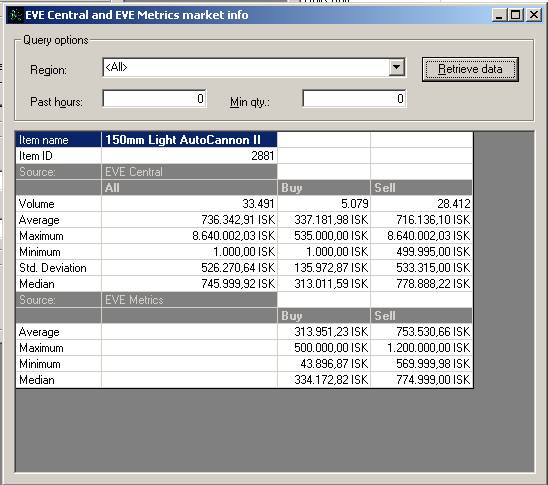
Item chart lets you plot a price chart over time for a specific item.
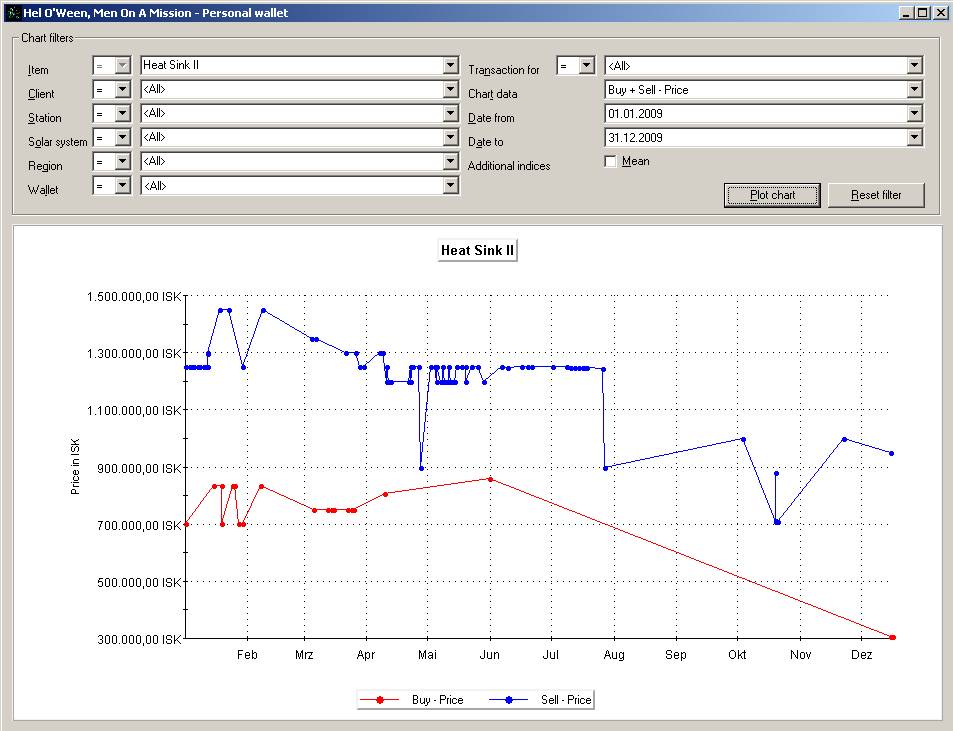
The available filters are pretty much the same as for the Wallet transactions. If you activate "Additional indices Mean", EWA will add a graph of the statistical mean for the selected charts.
You may open the item chart window from the context menu of various grids, like wallet transactions, market buy/sell orders. Doing so will preselect the item.
While the Wallet transactions window solely deals with your market activities, the Wallet journal shows all of your (financial) ingame records. Player donations, agent mission rewards, sovereignity bills etc.

The column "Reason" deserves an explanation. While most of the time it will be empty, there are a few occasions where this column will show some content. One occasion, where content is served by the API, is for "Bounty Prizes". Entries accompanying bounties will look like
24033:2,17573:3,17574:2,23976:1,23977:1,24111:2,24112:1,...
This means you killed two NPCs with the internal ID 24033, three NPCs with ID 17573 and so on, for receiving this bounty.
Other entries where this column might display content is every ingame transaction where a player transfers/donates etc. money to another entity (player corporation, alliance) and fills in the field "Comment" in EVE's money transfer dialogue. If you're using EWA to manage your corporation's finance, make sure your members put something meaningful in there. "POS fuel expenses reimbursement" is a lot more helpful than simply an amount of some millions transfered from your corp's wallet to one of your members, because he outlayed the money for your POS' fuel.
Right-clicking on the grid will pop up a context menu.

Wallet journal context menu. |

Sort options. |
Please note that deleting records from the database only makes sense if the API has already scrolled "past" these records. Otherwise the deletion is only of temporary nature, as the same records come with the next API download again. Although EWA keeps track and takes care of duplicate records, it does so not for deleted records.
The Market orders menu is splitted between buy orders and sell orders.

I will just explain the sell order window, as both windows work identical. But before I start to do so, let me explain how market order API data differs from journal and transactions data. For journal and transactions you either get 1,000 entries or seven days worth of data. If 1,000 entries cover more than one week, you get those. Otherwise the oldest data the API provides for download is one week old at the time you query the API for data. EWA stores both journal and transactions data until you delete it. While downloading journal and transactions, EWA takes care of potential duplicates. However, for market orders, the API always provides a "full set". It's clearly not every market order you ever placed. But it's also not just the last week or max 1,000 entries. I have yet to figure out the logic behind it. Given that, EWA first deletes all market orders and then queries for new data.
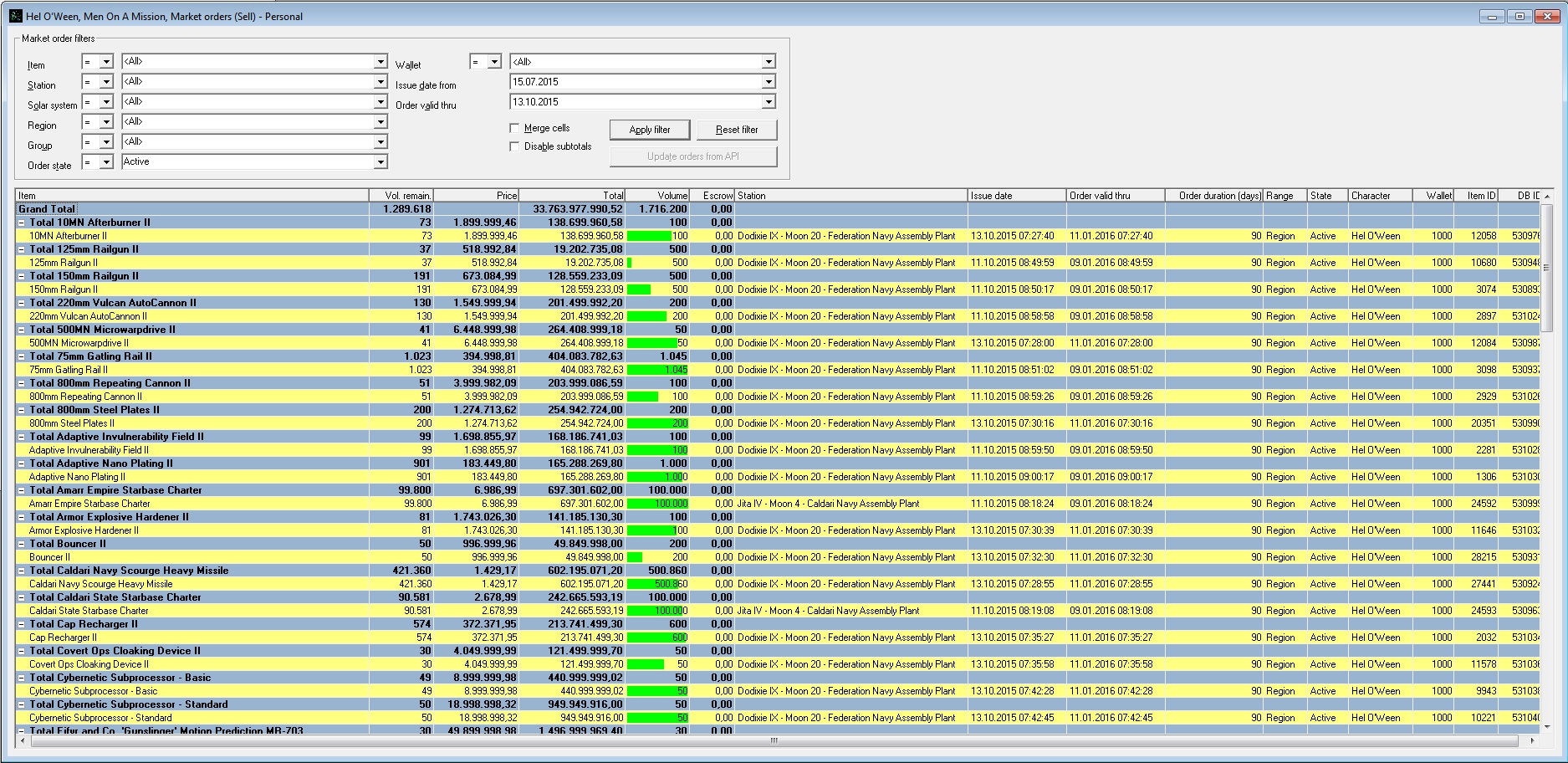
The available filters are pretty much the same as for wallet transactions. The exceptions are:
Right-clicking on the grid will pop up a context menu.

Market orders context menu. |
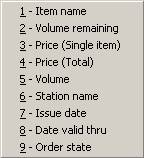
Sort options. |
The available entries in the market order grid's context menu provide the same functionality as their counterparts in the wallet transaction window.
The assets screen shows all the assets you currently posses. This includes for example modules fitted on a ship, everything in your hangar somewhere in a station and items stored in a POS (Player Owned Structure). It does not include items in contracts or items in sell orders.
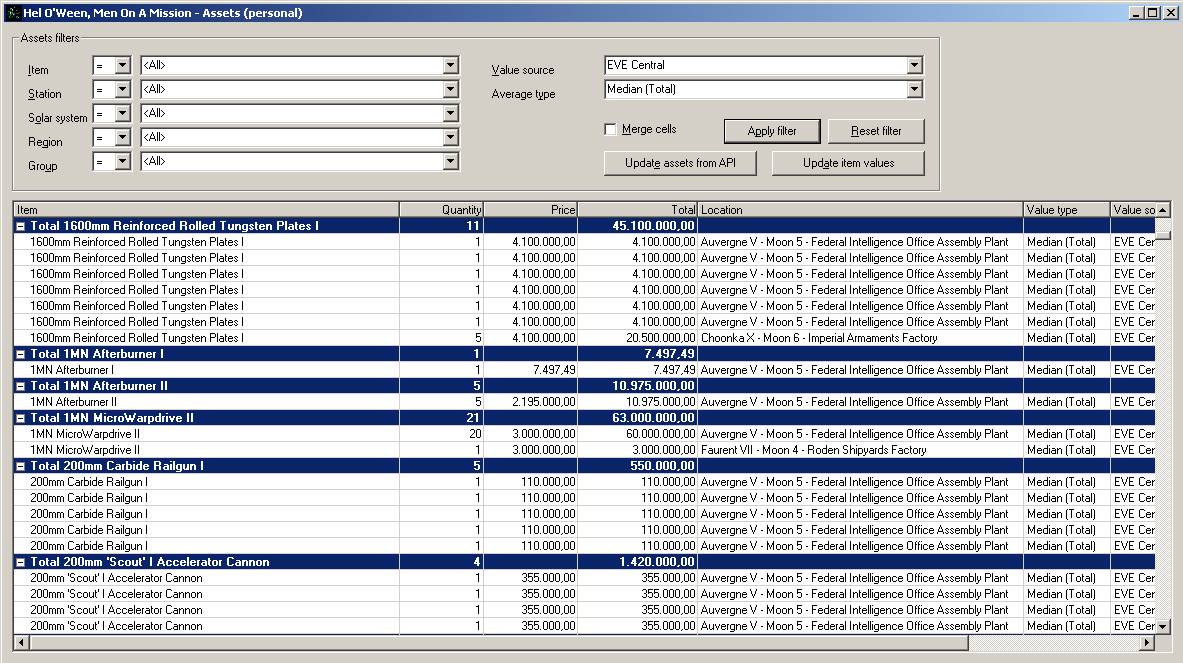
Assets in EWA work a bit different than other features. This is due to two factors. First, assets are cached for 24 h by the API. Second, (the amount of) assets can be enormous. That's why there such a long cache time for assets. Transactions, journals and market orders' chache timers are much shorter. Polling the assets along with these other APIs would result in an unnecessary long period of time the process of downloading new API data would take. Therefore, the assets window itself offers the option to refresh your assets. This is done by clicking the button labeled "Update assets from API"
In order to evaluate your assets, (average) prices from currently three different data sources are used. Your own transactions stored in EWA, EVE Central or EVE Metrics. The default option can be set in the options menu.
Of course, thes prices change over time. In order to update the values used to calculate the value of your assets, click "Update item values". This will recalculate the average prices from EWA and download updated prices from both EVE Central and EVE Metrics.
Please keep in mind that as of now CCP's assets API doens't distinguish between BPOs and BPCs. Both appear like BPOs in your assets list. Also, any research done on the BPO is not taken into account.
Right-clicking on the grid will pop up a context menu.
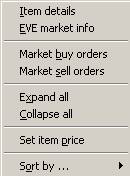
Assets context menu. |

Sort options. |
The available entries in the asset grid's context menu provide the same functionality as their counterparts in the wallet transaction window, with the exception of "Set item price". There are lots of items which can't be sold using the market. These items are traded via contracts. As of now, there's no contract API, so there's no way of getting prices automated from the API. Likewise, these items are not listed at EVE Central or EVE Metrics either. By default, these items will have a value of 0 ISK. You might set a value for these items by clicking this menu entry and entering a price.
The balance sheet provides you with a total either of your different journal entries or your wallet transactions over the specified time frame.

There isn't much to say about how to operate these screens. Enter a date range and click "Go". The results look like this:
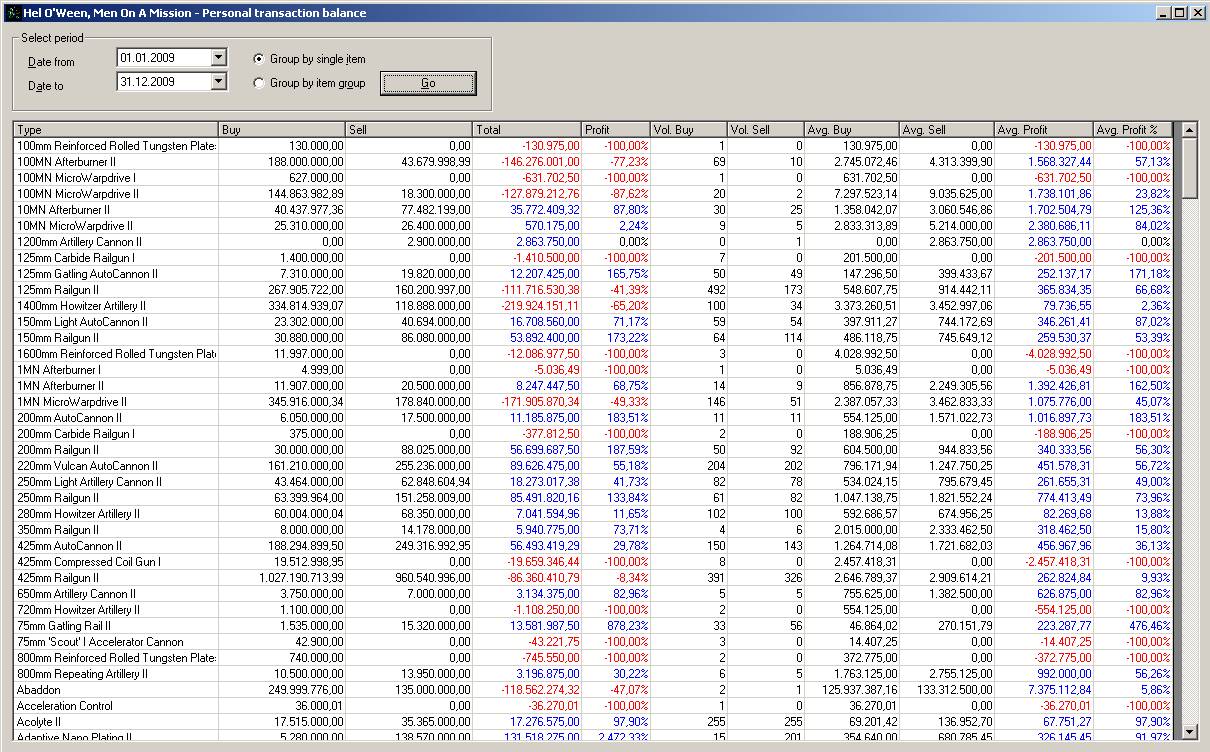


Traders might find the option "Market related only" of special interest. With this option enabled, only those journal entries are shown, which are related to sales/purchases in the market, like Broker fees, Sales taxes, Market transaction.
Pro tip: You can abuse this for your own purposes. Open EWA's INI and locate this entry:
; Balance sheet, wallet journal, refTypeIDs for market related journal entries BSWJMarketOnlyRefTypeID=2,42,44,46,54
The figures here represent the relevant refTypeIDs, which are used to build the filter. Change them as you see fit, but make sure you know what you're doing.
The Quick briefing window aims to give you a rough overview of your performance over the past days. It summarizes all buy & sell transactions per day and shows them both as figures and charts. A total of your daily wallet journal is given, too. You're also able to see your top bought & sold products. And last but not least, the "Order alerts" tab shows you your expired/fullfilled orders.
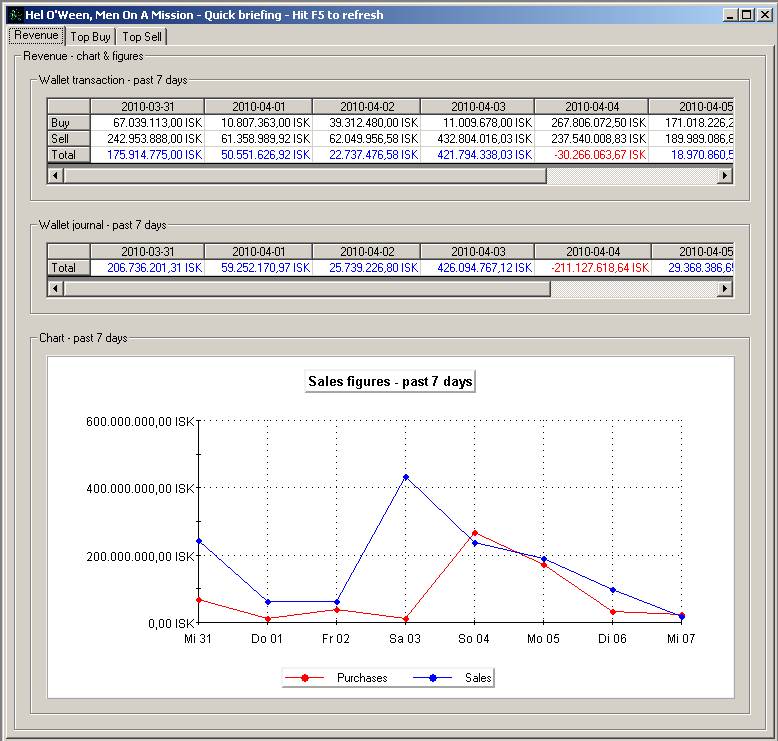



The number of past days to generate the Quick briefing for, can be configured via Extras -> Options -> tab "Quick briefing". There you might also set the Quick briefing to auto-open at program start.
Back to Menu File or continue to Menu Extras.